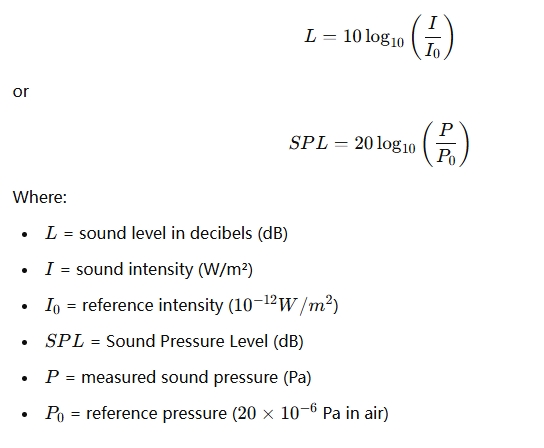Sound Level Calculator
What is a Sound Level Calculator?
A Sound Level Calculator is a tool used to determine the intensity or loudness of sound in decibels (dB). It helps measure and compare different sound levels, whether from a single source or multiple sources, and is commonly used in acoustics, audio engineering, and environmental noise studies.
It often calculates Sound Pressure Level (SPL) or Sound Intensity Level (SIL) using logarithmic formulas, such as:

Why Use a Sound Level Calculator?
This calculator is useful for:
- Acoustics & Audio Engineering – Measuring speaker output, optimizing audio systems, and room acoustics.
- Environmental Noise Monitoring – Assessing noise pollution in urban, industrial, and residential areas.
- Occupational Health & Safety – Ensuring workplace noise levels comply with safety regulations.
- Building Design & Construction – Evaluating soundproofing and noise control measures.
- Scientific Research – Studying sound propagation and its effects on human hearing.
How Does a Sound Level Calculator Work?
-
Measure Sound Pressure or Intensity – Use a sound level meter or microphone to get values.
-
Apply the Logarithmic Formula – Convert the measured pressure or intensity into decibels using the appropriate equation.
-
Compare with Standard Levels – Interpret the result against common sound levels (e.g., 30 dB = whisper, 90 dB = busy traffic, 120 dB = rock concert).
-
Combine Multiple Sources (if needed) – If multiple sound sources contribute to the total level, use:

where Li represents individual sound sources.
When to Use a Sound Level Calculator?
- In audio system calibration to ensure proper volume levels.
- For workplace noise assessment to prevent hearing damage risks.
- To evaluate noise pollution in residential or industrial areas.
- In soundproofing projects for designing quieter environments.